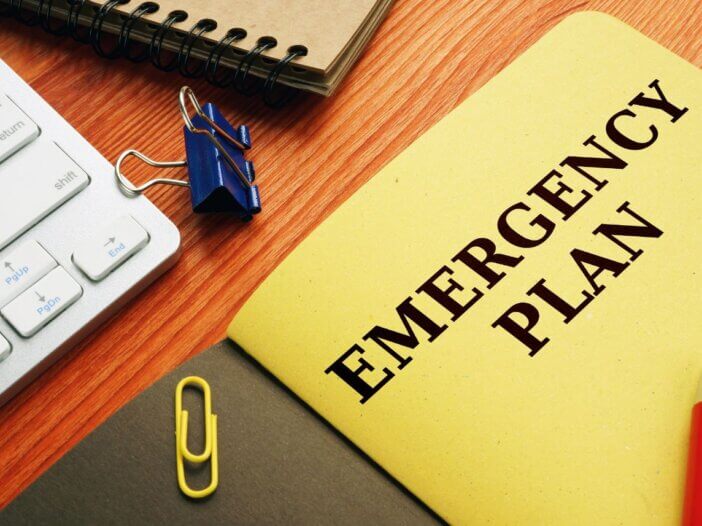
Emergencies can happen in the blink of an eye—whether it’s a sudden illness, a natural disaster, or an unexpected life event. Just like a fire drill prepares you for an actual fire, having an estate planning “fire drill” ensures that you and your loved ones are prepared when life throws the unexpected your way. Here are the essential steps and items to have ready to go in case of an emergency:
1. Centralized Access to Important Documents
- What to Do: Create a secure, easily accessible location (physical or digital) for your key estate planning documents. This should include:
- Your Will or Trust.
- Powers of Attorney for finances and healthcare.
- Advance Healthcare Directive (Living Will).
- Property deeds and titles.
- Insurance policies (health, life, home, auto).
- Pro Tip: Use a fireproof and waterproof safe or a secure cloud-based storage service to ensure these documents are protected and accessible.
2. Up-to-Date Contact Information
- Why It’s Important: Emergencies often require quick coordination with key people. Keep a list of:
- Family members and emergency contacts.
- Your executor or trustee.
- Financial advisor, attorney, and insurance agent.
- Healthcare providers.
- What to Include: Phone numbers, email addresses, and physical addresses for all key contacts.
3. Digital Access and Passwords
- What to Do: Compile a secure record of:
- Online banking and investment accounts.
- Email, social media, and subscription accounts.
- Access codes for devices and digital records.
- How to Secure It: Use a password manager or include this information in your estate plan to ensure your executor or trustee can manage your digital estate.
4. Emergency Instructions for Loved Ones
- What to Prepare: Create a guide outlining:
- Who to call first in case of an emergency.
- Step-by-step instructions for accessing critical documents.
- Specific wishes for medical care, end-of-life decisions, or funeral arrangements.
5. Contingency Plans for Dependents and Pets
- Why It’s Vital: Dependents and pets rely on you for care. Ensure:
- Guardianship for minor children is clearly outlined in your Will or Trust.
- Temporary care arrangements are documented and shared with trusted individuals.
- Pet care plans include designated caregivers and financial resources.
6. Insurance and Financial Safeguards
- What to Review: Confirm that:
- All insurance policies are up to date.
- Beneficiary designations on accounts match your estate plan.
- Emergency funds are easily accessible to your trustee or loved ones.
7. Know Your Emergency Numbers
- Must-Haves:
- Medical ID set up on your smartphone.
- Emergency contacts programmed into phones.
- A laminated card with key numbers and instructions in your wallet or car.
8. Regular Drills and Updates
- What to Do: Treat your estate plan like a living document:
- Revisit it annually or after major life changes (marriage, divorce, birth, or death in the family).
- Update all information to reflect current assets, beneficiaries, and wishes.
Final Thoughts
Just like a fire drill, your estate planning fire drill ensures that when the unexpected happens, you won’t be caught unprepared. Having everything set up and ready to go can provide peace of mind for you and your loved ones in the most stressful situations.
Remember: An estate plan isn’t just about protecting assets; it’s about safeguarding the people and values that matter most. Take action today to ensure you’re ready for whatever life may bring.
